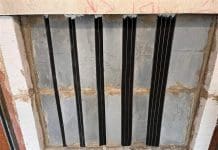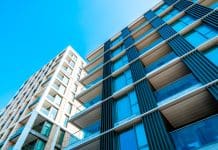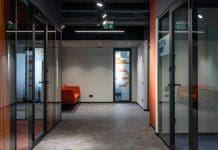Theresa May has pledged £400m to strip dangerous cladding similar to that used on Grenfell Tower from other high-rise blocks. But Christian Pillai of MAC Construction Consultants argues that a fundamental change in culture is also needed to avoid future tragedies
On 14 June 2017, a fire broke out in Grenfell Tower. This tragedy was to have far-reaching implications for not only the residents but the housing association, Kensington & Chelsea Tenant Management Organisation (KCTMO), those involved in the cladding works (in particular Harley Facades) and the incumbent Conservative government.
The big question coming out of this tragedy is what would happen next. Notably, what steps will be taken to ensure something like this does not happen again (or is at least mitigated adequately).
On 16 May 2018, after a lot of toing and froing, Theresa May announced that £400m will be raised to remove all similar cladding that is in place on other tower blocks throughout the country. While this is a great start, what else can be done to ensure this sort of tragedy never occurs again?
Before getting into that, let’s discuss briefly the history of how the fire occurred, and the impact it had on everyone involved.
The fire started as a result of a faulty fridge-freezer. It swept through the building at an unexpected, rapid rate thanks to the lack of adequate fire protection internally. Items such as a sprinkler system and adequately rated fire doors were lacking from the block. The fire doors were FD30 rated; however, were only able to withstand fires for 15 minutes.
Once the fire reached the façade, it was able to rise up the tower very quickly due to how the rainscreen cladding was fixed on to the building envelope. Rainscreen cladding systems are typically formed of thin, prefabricated panels intended primarily to prevent significant water egress penetrating the main wall construction. The thermal insulation, airtightness and structural stability required by the building envelope is provided by the second, inner part of the wall construction – in this case, the existing wall of the tower. The gap created as a result of this, between the panel and the building envelope, likely created a chimney-like effect and allowed the fire to race up the tower quicker than anticipated. It was later discovered that the cladding used did not meet the requirements of building regulations.
According to an investigation by the BBC’s Panorama, the insulation used in the erection of the cladding was not fire-resistant and never passed safety tests. This played a role in the spread of the fire too.
This tragedy had a huge impact on a variety of people. Of course, the impact on the residents was the most profound. The loss of a home, possessions and family members would have taken a monumental toll on not just their finances but their mental health. The implications of what happened are still being felt by the community, with many of them still not in permanent housing even to this date.
The fire also had an impact on the cladding contractor involved in the works. Harley Facades faced a lot of negative press and scrutiny after the incident. This undoubtedly sullied its reputation, and by extension that of the entire cladding industry.
The housing association that managed the block also came under fire in a big way. KCTMO ignored concerns about fire safety raised by the residents (Grenfell Action Group). It became apparent that there was a lack of fire alarms installed within the block and requests to retrofit a sprinkler system were largely ignored. While the Building Regulations (Part B) require sprinklers to now be fitted into new buildings taller than 30m, there is no requirement for retrofitting, which is why action was not taken. It was estimated that it would cost £200,000 to have installed the sprinkler systems in the block, according to the British Automatic Fire Sprinkler Association.
The government also came under heavy pressure due to the length of time it took to rehouse those affected by the fire. Widespread condemnation was felt throughout the country and pressure was mounting from the opposition benches.
So, what should be done going forward? Firstly, when it comes to the design process, architects are to specify fire-resistant panels and insulation lining that comply with Building Regulations. Independent fire risk assessments are to be undertaken on a more regular basis, too, to ensure that changes within/out the building are noted and the fire risks are mitigated going forward.
A change in culture is required from all parties involved in similar projects. The need to cut costs is to be mitigated and safety, in so far as reasonably practicable, is to be always considered. This is where the principal designer should play a vital role in ensuring that the designs pay particular attention to fire safety, as well as overall safety in design.
More comprehensive and robust fire testing is to be conducted to ensure deficiencies such as the failures encountered at Grenfell do not occur again. As a matter of course, it would be expected, going forward, that the erection of the panels would match the way they were fitted during the testing so that the same results can be achieved should another fire break out in a different tower block.
Modifications to the Building Regulations (Part B) would go some way to making these towers safer. Enforcing the retrofitting of sprinkler systems would make the older blocks much safer than they presently are.
Overall, the proposed plans by the government will go some way to rectify the tragic events of last June but without fundamental change, are we just awaiting a ticking time bomb for the next tragedy?
Christian Pillai
Health and Safety Consultant
MAC Construction Consultants
Tel: +44 (0)113 245 3000
ChristianPillai@macconsultingltd.com
Twitter: @MAC_Consulting_



![[VIDEO] Making DorTrak reports easy to read with Fireco Inspecting fire doors at Fireco, firedoor technology, 2023](https://www.pbctoday.co.uk/news/wp-content/uploads/2024/04/JPZ_2364-web-218x150.jpg)









